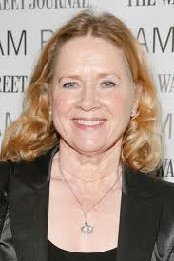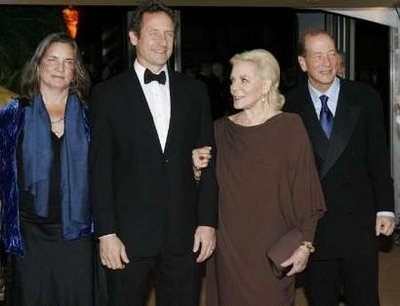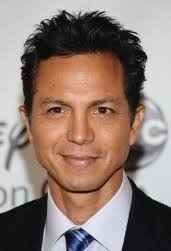
My Jerry, when in the USMC, was stationed at Camp Fuji in Japan during the Viet Nam War.
Situated at the base of Mount Fuji, bordering the Kanto plain, lies Camp Fuji, a USMC facility with a rich and abundant history that represents the culture of its host nation. The ground adjacent to Camp Fuji was used for training samurai warriors long before the Marines arrived. As far back as 1198 AD, the Kamakura Feudal Government trained more than 30,000 Samurai warriors on the same ground where Marines and other US forces train today.
The Fuji Maneuver Area (FMA), which consists of the 12,000 acre North Fuji Maneuver Area (NFMA) and the 22,000 acre East Fuji Maneuver Area (EFMA), is jointly used by US forces and the Japanese Ground Self Defense Force (JGSDF). It contains live-fire ranges as well as maneuver areas. NFMA is owned by the Government of Japan (GOJ), Yamanashi Prefecture, and private landowners. EFMA is owned by the GOJ and private landowners. GOJ compensates the landowners for the use of the land. The US Army trained in this area prior to, and in preparation for, the Korean Conflict. They occupied a number of camps -- such as Camp Fuji McNair, North Camp, Middle Camp, and South Camp. The US Army turned over North Camp to the USMC in 1953--which was actually located where Takigahara Garrison and the Japanese National Youth Center are located today (across the street from the present Camp Fuji). The other camps were vacated in the mid-1950s and JGSDF units took possession.
The Camp is an exclusive use, full service, 309 acre US facility designed to support US forces. The helicopter runway is a joint use facility shared by US forces and the JGSDF. Camp Fuji has come a long way from the austere living conditions of the past.
In 1983, initial modernization projects were completed which improved the fire department, barracks, permanent personnel mess hall security building, and sewage treatment plant. In 1986, the medical clinic and a cold-storage facility became operational. In 1987, tents and Quonset huts were replaced by open squad-bay style barracks and maintenance buildings. In 1993, two more barracks were completed and in 1994, a new BOQ, gym, and post office opened. In 1995, a new CP was completed and all roads aboard the Camp were paved. In 2002, the newest Community Center opened with the new PX, Road House E-Club, Station 4 SNCO and Officers Club, Barber Shop, Library and food facilities opened. Additional modern maintenance facilities are planned in the near future under the Japanese Facility Improvement Plan (JFIP).
Future use of Camp Fuji and the FMA is expected to continue as in the recent past. This area will continue to provide the realistic, valuable training opportunities required to ensure combat readiness of US forces stationed in Japan.
Combined Arms Training Center (CATC), Camp Fuji is part of Marine Corps Bases Japan. Following the integration of 3rd Marine Division’s Subunit 1 and Combat Service Support Detachment 76 with CATC, the mission of CATC was changed to provide all logistic and training support necessary to support US forces deployed to the FMA for training. CATC assists deployed units in scheduling, coordinating, and using live-fire and maneuver ranges in the FMA; coordinates movement support for III MEF units between Camp Fuji and various points of embarkation/debarkation on the Kanto Plain; and provides intermediate level maintenance and supply support on ground equipment used in the FMA.
Mount Fuji is located on the island of Honshū, is the highest mountain in Japan, standing 12,389.2 ft. It is the second-highest volcano located on an island in Asia (after Mount Kerinci on the island of Sumatra), and seventh-highest peak of an island on Earth. Mount Fuji is an active strato volcano that last erupted from 1707 to 1708. The mountain is located about 62 miles southwest of Tokyo and is visible from there on clear days. Mount Fuji's exceptionally symmetrical cone, which is covered in snow for about five months of the year, is commonly used as a cultural icon of Japan and it is frequently depicted in art and photography, as well as visited by sightseers and climbers.
If you want to read a lot more about Mount Fuji, go here:
https://en.wikipedia.org/wiki/Mount_Fuji
Everyone wants to feel a little special during the holiday season. An easy--and tasty--way to do that is to shake up Christmas dinner with our Lemon-Rosemary Roasted Cornish Hens! Once you roast up these tender hens, you can serve everyone their own perfectly-sized main dish! It'll be the juiciest and most flavorful Christmas dinner the family has ever had.
- 1/2 cup white wine
- 1 cup chicken broth
- 2 tablespoons Dijon mustard
- 1 tablespoon olive oil
- 4 (1-pound) Cornish game hens, thawed, if frozen
- Salt for sprinkling
- Black pepper for sprinkling
- 1 lemon, quartered
- 4 sprigs fresh rosemary
- 8 cloves garlic, slivered
- Preheat oven to 375º. Place a wire rack in a large roasting pan; set aside.
- In a small bowl combine wine, chicken broth, and Dijon mustard; mix well. Set aside.
- Drizzle olive oil evenly over hens and rub to coat completely. Sprinkle with salt and black pepper. Place 1 lemon wedge and 1 rosemary sprig in the cavity of each hen. Place hens on the rack in roasting pan and spread garlic around hens.
- Pour half the wine mixture over the hens and roast 30 minutes. After 30 minutes, pour remaining wine mixture over the hens and roast an additional 30 to 35 additional minutes or until no pink remains and juices run clear.
- Arrange hens on a platter and serve with pan drippings and sliced lemon and rosemary.
HOW TO OBSERVE
- Bananas and peanut butter
- Cookies
- Potato chips
- Orange wedges
- Ritz crackers
- Biscotti
- Peanut brittle
- Marshmallows
- Fudge
- Shortbread
- Ice cream

















No comments:
Post a Comment